Daniel Fremont
Querying Labelled Data with Scenario Programs for Sim-to-Real Validation
Dec 01, 2021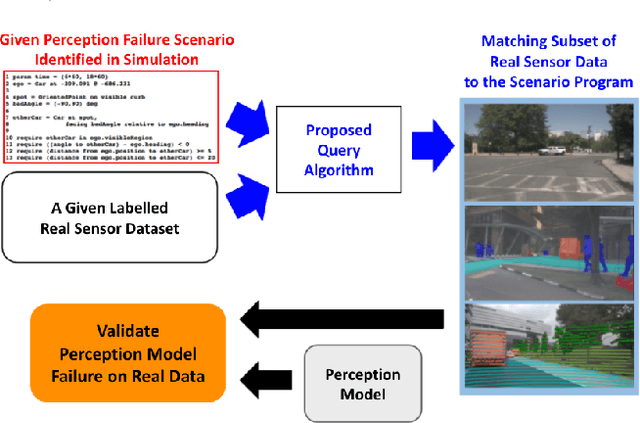


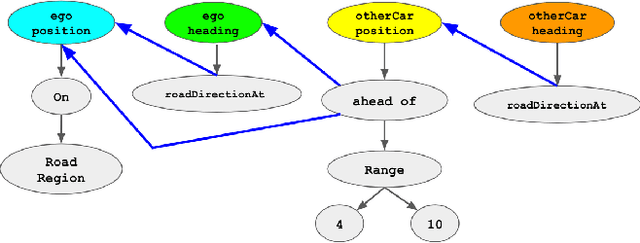
Abstract:Simulation-based testing of autonomous vehicles (AVs) has become an essential complement to road testing to ensure safety. Consequently, substantial research has focused on searching for failure scenarios in simulation. However, a fundamental question remains: are AV failure scenarios identified in simulation meaningful in reality, i.e., are they reproducible on the real system? Due to the sim-to-real gap arising from discrepancies between simulated and real sensor data, a failure scenario identified in simulation can be either a spurious artifact of the synthetic sensor data or an actual failure that persists with real sensor data. An approach to validate simulated failure scenarios is to identify instances of the scenario in a corpus of real data, and check if the failure persists on the real data. To this end, we propose a formal definition of what it means for a labelled data item to match an abstract scenario, encoded as a scenario program using the SCENIC probabilistic programming language. Using this definition, we develop a querying algorithm which, given a scenario program and a labelled dataset, finds the subset of data matching the scenario. Experiments demonstrate that our algorithm is accurate and efficient on a variety of realistic traffic scenarios, and scales to a reasonable number of agents.
A Customizable Dynamic Scenario Modeling and Data Generation Platform for Autonomous Driving
Nov 30, 2020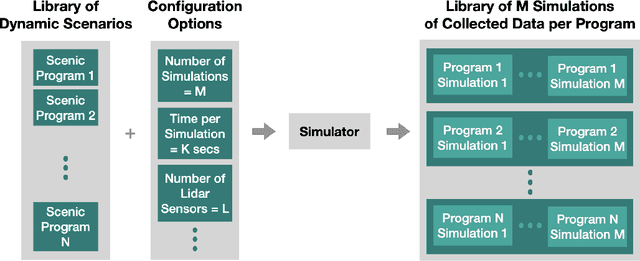
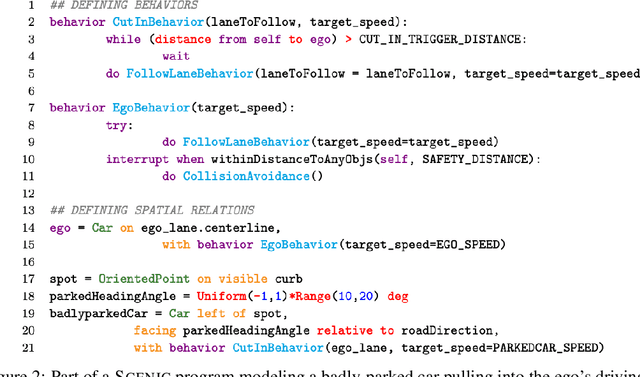
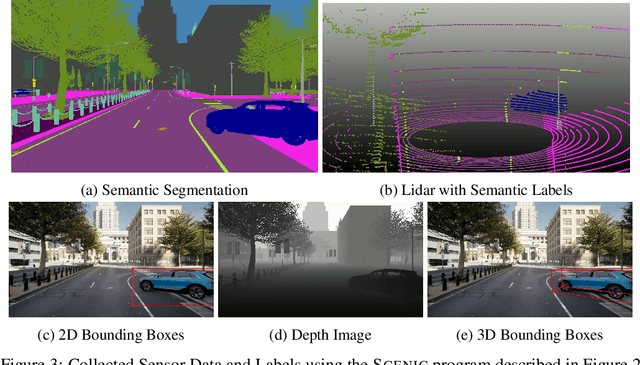
Abstract:Safely interacting with humans is a significant challenge for autonomous driving. The performance of this interaction depends on machine learning-based modules of an autopilot, such as perception, behavior prediction, and planning. These modules require training datasets with high-quality labels and a diverse range of realistic dynamic behaviors. Consequently, training such modules to handle rare scenarios is difficult because they are, by definition, rarely represented in real-world datasets. Hence, there is a practical need to augment datasets with synthetic data covering these rare scenarios. In this paper, we present a platform to model dynamic and interactive scenarios, generate the scenarios in simulation with different modalities of labeled sensor data, and collect this information for data augmentation. To our knowledge, this is the first integrated platform for these tasks specialized to the autonomous driving domain.
 Add to Chrome
Add to Chrome Add to Firefox
Add to Firefox Add to Edge
Add to Edge